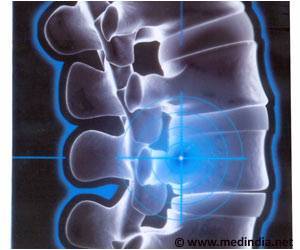There is an urgent need for the development of human-like tumor models.

‘Using tissue engineering researchers have created models for studying the bone-destroying activity of tumors such as the aggressive pediatric cancer Ewing's sarcoma.’





In the article entitled "Tissue-Engineered Model of Human Osteolytic
Bone Tumor," Gordana Vunjak-Novakovic and coauthors from Columbia
University, New York, NY and Politecnico di Milano, Italy, present the
methods used to bioengineer a living Ewing's sarcoma model that includes
both osteoclasts and osteoblasts in a controllable biomimetic
environment. The researchers demonstrate the usefulness of the model for
testing anti-osteolytic drugs. "This article is an excellent example of the progress being made," says Methods Co-Editor-in-Chief John A. Jansen, Professor and Head, Department of Biomaterials, Radboud University Medical Center, The Netherlands.
Source-Eurekalert









